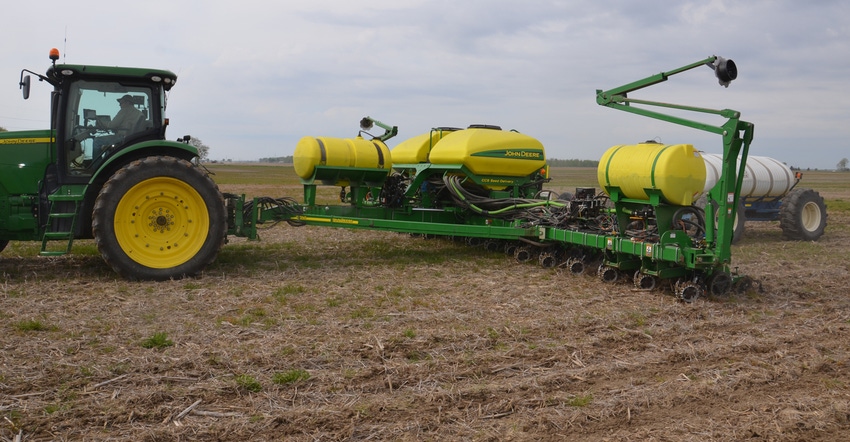May 9, 2022

Driving the length of Indiana recently, it was encouraging to see so many crop fields untouched after last year’s harvest. Perhaps the message of not disturbing bean stubble with tillage in the fall is taking hold. I also noticed a significant number of fields with cover crops.
Feeling pumped up for conservation, I mentioned these observations to a farmer. He concurred, but added, “Yes, it was so wet last fall, we barely got the crops in — no one around here had a chance to do fall tillage.” Talk about bursting my bubble! Was it a lack of opportunity caused by wet weather last fall that prevented tillage, not a change in mindset?
Fast-forward to spring. It was another wet, cool start across much of Indiana. Some anticipated more no-till than usual, but only because weather was limiting farmers’ options. Some may figure they can no-till before it’s dry enough to till, or that they can plant more acres faster by skipping tillage.
Factors favoring no-till
There are other factors at work. Sky-high prices for diesel fuel make tillage trips more costly. Plus, some people didn’t get the new equipment they expected due to disruptions in the supply chain. They’re going another year with equipment they intended to replace. Prices for repair parts for things like shovels and blades for tillage equipment are higher than a year ago.
A combination of these factors could have people thinking about no-tilling. Here are key questions: Are you no-tilling just as a quick fix for extenuating circumstances? Or are you serious about a shift, and ready to change your mindset?
If no-tilling this spring is just a quick fix, don’t expect fantastic results. Veteran no-tillers will tell you that no-till is a system that requires more management, not less, compared to conventional tillage. If you decide to include cover crops, the management level kicks up another notch. The chances for reaping benefits increase as well, but only if you are as conscientious as possible about how you do it.
Making no-till work
If you’re going to no-till, here are some basic tips no-tillers have passed on to others:
Make sure the planter is properly equipped. There are many planters on the market that can no-till successfully. The key is making sure your planter can do what you want to do. If you shift from planting conventionally to no-tilling, your planter will likely require changes in settings and adjustments.
No-till isn’t a license to plant wet. If the seed trench doesn’t close properly or if you create sidewall compaction, no-till fields can suffer just as much as tilled fields planted too wet, if not more.
Adjust fertilizer management practices. Most agronomists agree that no-till may benefit more from starter fertilizer, especially if you’re planting corn into heavy residue or cover crops.
Be fair in assessing results. If you’ve tilled soils all your life, you have prepared for that system over many years. Don’t expect everything to go perfectly during your first year in no-till. Don’t bad-mouth the practice if you try it once and you’re not satisfied, especially if you didn’t invest time in preparation.
Comments? Email [email protected].
Read more about:
No tillYou May Also Like




